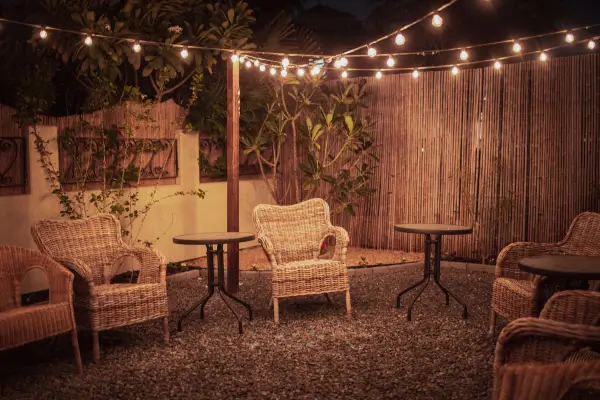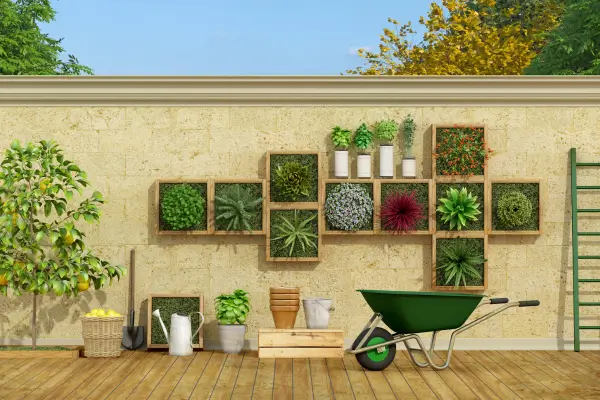How to build a wooden planter box is a skill every DIY enthusiast can master. This project combines woodworking with gardening in a simple and rewarding way. With growing interest in urban gardening, it’s both practical and eco-friendly.
A wooden planter box is a raised container made of wood. It holds soil and plants, helping you organize your garden or patio. This project is perfect for beginners who want to create something functional and stylish.
Building your own planter box offers many benefits. You can use recycled materials, save money, and customize the design. Plus, it adds a decorative touch to any outdoor space. Let’s explore how to get started.
What is a Wooden Planter Box?
A wooden planter box is a container designed to hold soil and plants. It keeps roots healthy while preventing soil erosion. These boxes are ideal for small spaces like patios or balconies.
You can build a planter box using reclaimed wood or new materials. The design can be simple or intricate, depending on your skill level. For beginners, a basic rectangular shape works best.
Planter boxes also allow better drainage than traditional gardens. They elevate plants, keeping them safe from pests and waterlogging. This makes gardening easier and more efficient.
Why Build Your Own Wooden Planter Box?
Building your own planter box has significant advantages. One key benefit is cost savings. Using recycled wood reduces expenses significantly. You can repurpose old pallets or scraps.
Another advantage is customization. You control the size, shape, and style of the box. Whether you need a compact herb garden or a large vegetable bed, the choice is yours.
Sustainability is another major benefit. Reusing materials minimizes waste. It also supports eco-friendly practices. This aligns with the growing trend of green living.
Planter boxes improve accessibility too. Raised containers reduce bending and strain. This is especially helpful for older gardeners or those with mobility issues.
Step-by-Step Guide to Building a Wooden Planter Box
Start by gathering materials. You’ll need wooden boards, screws, a drill, and a saw. Recycled wood works well if properly treated. Avoid treated lumber that may contain harmful chemicals.
Measure and cut the pieces. Decide on the dimensions based on your space and needs. A typical box might measure 2 feet long, 1 foot wide, and 1 foot deep. Adjust as needed.
Assemble the frame. Attach the side panels to the base using screws. Ensure corners are secure and even. Reinforce joints for added stability. Use waterproof glue if necessary.
Add finishing touches. Sand rough edges to prevent splinters. Apply a non-toxic sealant to protect against weather damage. This extends the life of your planter box.
Fill the box with soil. Use high-quality potting mix for best results. Plant your favorite herbs, flowers, or vegetables. Water regularly and watch your garden grow.
Best Plants for Wooden Planter Boxes
Choosing the right plants ensures success. Herbs like basil, mint, and rosemary thrive in planter boxes. They require minimal space and care, making them ideal for beginners.
Flowers add color and charm. Marigolds, petunias, and pansies are excellent choices. They bloom quickly and attract pollinators like bees and butterflies. These plants also tolerate partial shade.
Vegetables are another great option. Lettuce, spinach, and radishes grow well in shallow boxes. Tomatoes and peppers need deeper containers but still flourish in planter boxes. Choose varieties suited to your climate.
Succulents and cacti are low-maintenance options. They require minimal watering and thrive in sunny spots. Their unique shapes add visual interest to your outdoor space.
Creative Ideas for Using Wooden Planter Boxes
Wooden planter boxes offer endless possibilities. For small spaces, consider vertical designs. These maximize planting area without taking up floor space. Vertical gardens are perfect for balconies or narrow patios.
Vertical designs involve stacking multiple boxes. Secure them to walls or fences using brackets. Add shelves or hooks for additional storage. This creates a lush, organized look.
For larger gardens, create modular layouts. Arrange several boxes in patterns. Add trellises for climbing plants like tomatoes or beans. This enhances visual appeal and functionality.
Herb gardens are another great option. Grow basil, mint, or rosemary in compact boxes. Place them near your kitchen for easy access. Fresh herbs enhance cooking and save money.
Seasonal decorations add charm. Paint boxes in festive colors for holidays. Add lights or ornaments during winter. This transforms your outdoor space into a year-round feature.
Challenges and How to Overcome Them
One common challenge is finding suitable wood. Not all materials are safe for gardening. Avoid pressure-treated wood, which may leach chemicals. Opt for cedar or untreated pine instead.
Weather resistance is another concern. Wooden boxes can rot over time. To prevent this, apply a protective sealant. Regular maintenance ensures longevity.
Drainage issues may arise. Poorly drained soil harms plant roots. Drill holes at the bottom of the box. Add a layer of gravel before filling with soil. This improves water flow.
Space limitations can also be tricky. Measure your area carefully before building. Choose proportions that fit without overcrowding. Compact designs work well for tight spaces.
Final Thoughts
Building a wooden planter box is a rewarding project. It combines creativity, sustainability, and practicality. Whether you’re growing herbs or flowers, this DIY solution enhances your outdoor space.
Start small by gathering materials around your home. Experiment with designs and styles. Your efforts will pay off in beauty and functionality. Every step contributes to a greener future.
With patience and creativity, anyone can build a wooden planter box. It’s an opportunity to connect with nature while reducing waste. Begin today and enjoy the fruits of your labor tomorrow.



